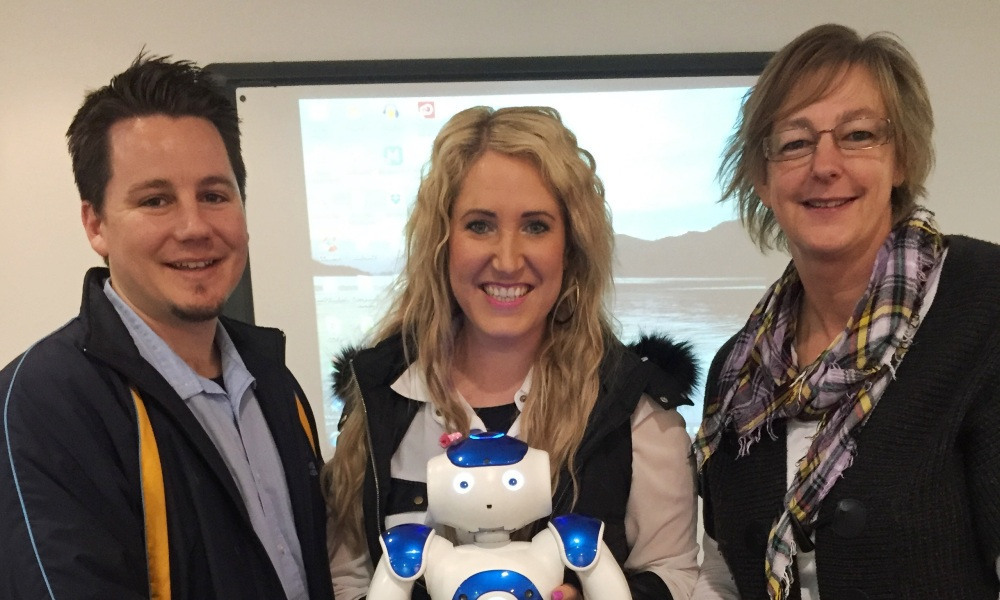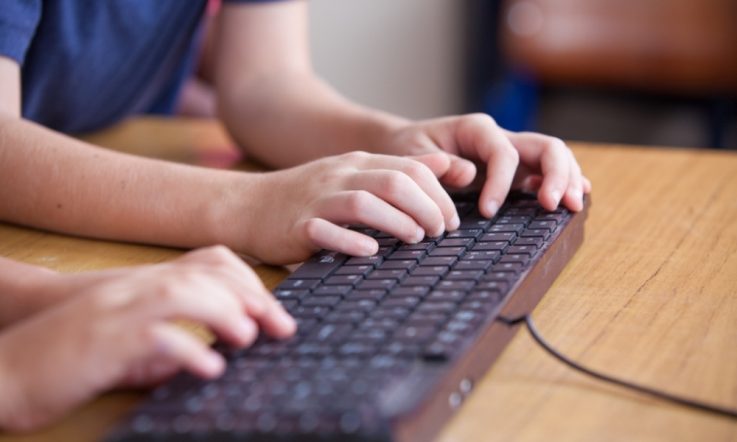Yesterday, we brought you news of some of the early results from a three year research project exploring the impact of humanoid robots on teaching and learning. In this follow-up article, Teacher Editor Jo Earp speaks to one of the educators involved to find out how staff and students at his school made the most of the technology last term.
'There are two schools of thought – we get this technology and teach the kids how to do everything ... or we get the technology, give them the basics, we model for them what's possible, and then we let them go. And that [the second option], is basically what we did.'
Ben Curtin is full of enthusiasm as he tells Teacher about P!nk the NAO humanoid robot's visit to his school in Adelaide's southern suburbs last term, which was part of a research project coordinated by the Association of Independent Schools South Australia (AISSA).
The Assistant Principal and Learning Support Coordinator at Our Saviour Lutheran Primary School says the main focus was on using P!nk to help Year 6 and 7s develop skills in the new Digital Technologies Curriculum. 'I think probably the most applicable skill that we saw was the students sorting through all the information available to them on the software that works with her, then selecting information "for a purpose" – so, selecting the code, selecting the actions that they want her to do – and then putting that into a sequence, an actual program that the robot can run.'
Whether it was watching P!nk spring to life, or running a test on her 'virtual' counterpart on a computer screen, Curtin says the immediacy of the feedback was a real bonus for students. 'If it didn't quite work right or if there was a gap somewhere, then they went into "evaluating and problem solving", which is a big part of the cycle that [the curriculum] wants kids to be involved in – proposing, evaluating, refining and testing.'
At a basic level, students were able to program P!nk to carry out simple actions and speech. Those who wanted to explore further drilled down into the drag and drop programming blocks to open up the coding language, which in the NAO's case is Python.
For the teachers involved, planning for the robot's arrival was an interesting task. 'What we ended up doing was dividing the kids into pairs and doing a revolving schedule across the whole school day, three days a week, where those two students had that half-an-hour to [work with P!ink] and pursue their individual projects,' Curtin explains. 'Then twice a week the whole class would be in the computer lab with the robot and the teacher, and that was the time for them to share what they'd done, ask questions and get help from the teacher, and she would also show them things in that whole group setting.'
P!nk also turned her talents to German classes for all year groups. 'We didn't do any coding in that class, it was just language acquisition. We did a pre-assessment based on the different age groups of kids and what we wanted them to focus on that term – [vocabulary themes for] some of the younger ones were colours and numbers, for some of the older ones they were emotions and sports.
'We utilised a lot of already built-in programs that P!nk has; so, she tells stories, plays interactive games like "guess the emotion that I'm doing" or "guess the sport that I'm playing", or she sings number and letter songs, things like that. We just [switched her language] into German and she did those activities with the kids. They sat down on the carpet in a circle around her and she kind of led them in the activity. The one part that was tricky was when they tried to talk back to her – her speech recognition in German, we found that very difficult.'
The next step is for staff to work with AISSA and the research team to explore the data collected during the term, including pre- and post-assessments, student surveys and videos, and to give their own reflections on the robot's impact. At a school level, Curtin and colleagues will also be mapping evidence of student learning against skills and outcomes in the Digital Technologies Curriculum.
How are you and colleagues preparing for the new Digital Technologies Curriculum?
What resources will you need at a classroom and whole school level?
Are there opportunities to link some of the skills and concepts to existing curriculum content?



